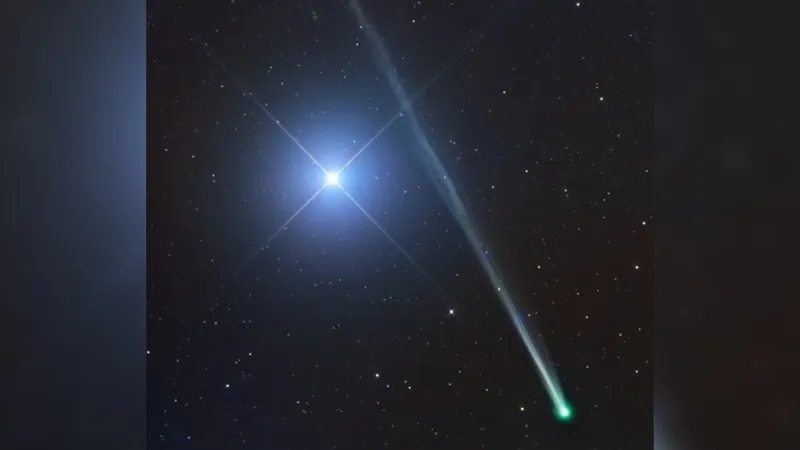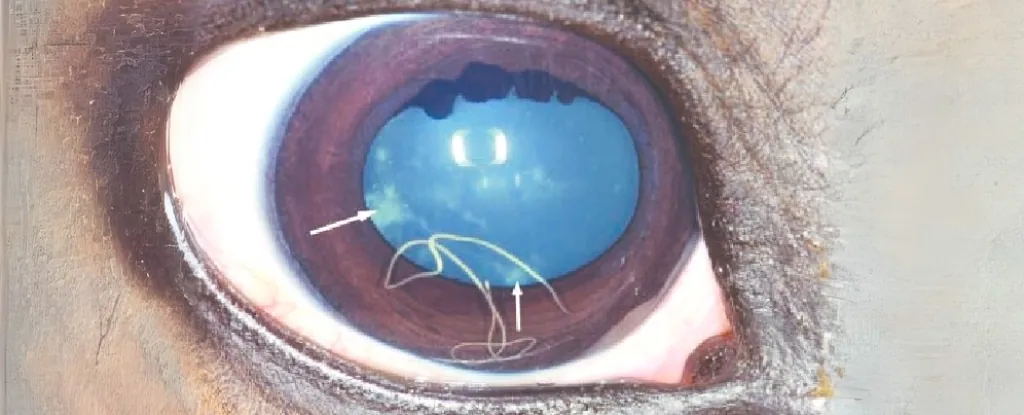
Get Ready! The Spectacular Comet C/2025 R2 (SWAN) Could Dazzle Us in October
2025-09-22
Author: Olivia
A Celestial Wonder Awaits in Our Evening Sky
Get your binoculars ready, stargazers! A newly discovered comet, C/2025 R2 (SWAN), is poised to light up our evening sky this October. This dazzling spectacle comes courtesy of amateur astronomer Vladimir Bezugly from Dnipro, Ukraine, who stumbled upon the comet while analyzing images from the Solar Wind Anisotropies (SWAN) camera on the Solar and Heliospheric Observer (SOHO) spacecraft.
The Bright Discovery of Comet SWAN
Spotted between September 5-9, this comet has already amazed observers, with Bezugly stating, "This is one of the brightest comet discoveries from SWAN images." By September 15, it was officially designated as Comet C/2025 R2 (SWAN), marking the 20th SWAN comet discovery.
How Bright Will It Be?
Astronomers use a magnitude scale to gauge brightness: lower numbers indicate brighter objects. The limit for naked-eye visibility is about +6.5 magnitude, while Comet SWAN currently hovers around +7, slightly out of reach for the unaided eye but perfect for binoculars.
Predictions for its brightness during its closest approach to Earth are promising. Experts suggest it may shine between +6 and +7, potentially becoming visible to the naked eye as it peaks around mid-October.
Mark Your Calendars: Closest Encounter on October 21
As it approaches, Comet SWAN will be at its closest to Earth on October 21, just 25.10 million miles away. With an impressive orbital period of about 1,400 years, this comet is a rare treat! It will traverse the night sky, crossing various constellations like Libra, Scorpius, and Sagittarius.
Finding Comet SWAN: What You Need to Know
For those in the Northern Hemisphere, patience is key. This comet has mainly been observable from the Southern Hemisphere thus far. By early October, it will begin climbing higher into the southwestern sky, reaching peak visibility toward the end of the month.
The Challenge of Light Pollution
Keep in mind that spotting Comet SWAN could be tricky in areas with light pollution. Look for a glowing, diffuse cloud rather than a sharp, star-like object. This comet is primarily gas and will appear bluish-white, glowing like phosphorescent paint under UV light.
Forget the Meteor Shower Rumors!
While social media buzzes with speculation about a potential meteor shower around October 5 due to the comet's orbit intersecting Earth’s, don’t get your hopes up. Calculations suggest that both orbits are far enough apart to prevent any significant meteor activity.
Conclusion: A Must-Watch Event!
In summary, keep your eyes peeled for Comet C/2025 R2 (SWAN), especially around mid-October when it may become faintly visible without binoculars. Whether you’re a seasoned astronomer or a curious newcomer, this comet presents a unique opportunity to witness a cosmic marvel. Grab your gear and get ready for an unforgettable celestial show!









 Brasil (PT)
Brasil (PT)
 Canada (EN)
Canada (EN)
 Chile (ES)
Chile (ES)
 Česko (CS)
Česko (CS)
 대한민국 (KO)
대한민국 (KO)
 España (ES)
España (ES)
 France (FR)
France (FR)
 Hong Kong (EN)
Hong Kong (EN)
 Italia (IT)
Italia (IT)
 日本 (JA)
日本 (JA)
 Magyarország (HU)
Magyarország (HU)
 Norge (NO)
Norge (NO)
 Polska (PL)
Polska (PL)
 Schweiz (DE)
Schweiz (DE)
 Singapore (EN)
Singapore (EN)
 Sverige (SV)
Sverige (SV)
 Suomi (FI)
Suomi (FI)
 Türkiye (TR)
Türkiye (TR)
 الإمارات العربية المتحدة (AR)
الإمارات العربية المتحدة (AR)